-
 Enhancing Deforestation Detection Through Multi-Domain Adaptation with Uncertainty Estimation
Enhancing Deforestation Detection Through Multi-Domain Adaptation with Uncertainty Estimation -
 A Standardized Framework to Estimate Drought-Induced Vulnerability and Its Temporal Variation in Woody Plants Based on Growth
A Standardized Framework to Estimate Drought-Induced Vulnerability and Its Temporal Variation in Woody Plants Based on Growth -
 Carbon Flux Modeling with the Calibrated Biome-BGCMuSo in China’s Tropical Forests: Natural and Rubber-Planted Forests
Carbon Flux Modeling with the Calibrated Biome-BGCMuSo in China’s Tropical Forests: Natural and Rubber-Planted Forests
Journal Description
Forests
Forests
is an international, peer-reviewed, open access journal on forestry and forest ecology published monthly online by MDPI.
- Open Access— free for readers, with article processing charges (APC) paid by authors or their institutions.
- High Visibility: indexed within Scopus, SCIE (Web of Science), Ei Compendex, GEOBASE, PubAg, AGRIS, PaperChem, and other databases.
- Journal Rank: JCR - Q2 (Forestry) / CiteScore - Q1 (Forestry)
- Rapid Publication: manuscripts are peer-reviewed and a first decision is provided to authors approximately 17.1 days after submission; acceptance to publication is undertaken in 2.4 days (median values for papers published in this journal in the first half of 2025).
- Recognition of Reviewers: reviewers who provide timely, thorough peer-review reports receive vouchers entitling them to a discount on the APC of their next publication in any MDPI journal, in appreciation of the work done.
- Testimonials: See what our editors and authors say about Forests.
Impact Factor:
2.5 (2024);
5-Year Impact Factor:
2.7 (2024)
Latest Articles
Characterization of Low-Temperature Waste-Wood-Derived Biochar upon Chemical Activation
Forests 2025, 16(8), 1237; https://doi.org/10.3390/f16081237 (registering DOI) - 27 Jul 2025
Abstract
Depending on the feedstock type and the pyrolysis conditions, biochars exhibit different physical, chemical, and structural properties, which highly influence their performance in various applications. This study presents a comprehensive characterization of biochar materials derived from the waste wood of pine (Pinus
[...] Read more.
Depending on the feedstock type and the pyrolysis conditions, biochars exhibit different physical, chemical, and structural properties, which highly influence their performance in various applications. This study presents a comprehensive characterization of biochar materials derived from the waste wood of pine (Pinus sylvestris L.) and beech (Fagus sylvatica) after low-temperature pyrolysis at 270 °C, followed by chemical activation using zinc chloride. The resulting materials were thoroughly analyzed in terms of their chemical composition (FTIR), thermal behavior (TGA/DTG), structural morphology (SEM and XRD), elemental analysis, and particle size distribution. The successful modification of raw biomass into carbon-rich structures of increased aromaticity and thermal stability was confirmed. Particle size analysis revealed that the activated carbon of Fagus sylvatica (FSAC) exhibited a monomodal distribution, indicating high homogeneity, whereas Pinus sylvestris-activated carbon showed a distinct bimodal distribution. This heterogeneity was supported by elemental analysis, revealing a higher inorganic content in pine-activated carbon, likely contributing to its dimensional instability during activation. These findings suggest that the uniform morphology of beech-activated carbon may be advantageous in filtration and adsorption applications, while pine-activated carbon’s heterogeneous structure could be beneficial for multifunctional systems requiring variable pore architectures. Overall, this study underscored the potential of chemically activated biochar from lignocellulosic residues for customized applications in environmental and material science domains.
Full article
(This article belongs to the Section Wood Science and Forest Products)
Open AccessArticle
The Initial Impact of a Hydroelectric Reservoir on the Floristics, Structure, and Dynamics of Adjacent Forests in the Southern Amazon
by
Jesulino Alves da Rocha-Filho, Marco Antônio Camillo de Carvalho, Fabiana Ferreira Cabral Gomes, José Hypolito Piva, Beatriz Schwantes Marimon, Oscar Mitsuo Yamashita and Ben Hur Marimon-Junior
Forests 2025, 16(8), 1236; https://doi.org/10.3390/f16081236 (registering DOI) - 27 Jul 2025
Abstract
This study assesses whether the rise in water level—following three years of reservoir filling at the Teles Pires Hydroelectric Plant (135.6 km2 water surface) in Southern Amazonia—has affected the floristic composition, structure, and dynamics of adjacent forests. We established 62 permanent plots
[...] Read more.
This study assesses whether the rise in water level—following three years of reservoir filling at the Teles Pires Hydroelectric Plant (135.6 km2 water surface) in Southern Amazonia—has affected the floristic composition, structure, and dynamics of adjacent forests. We established 62 permanent plots (2000 m2 each) across a topographic gradient from the reservoir margin and conducted annual tree inventories for individuals with DBH ≥ 10 cm from 2014 to 2017. A total of 6322 individuals were recorded, representing 322 species, 210 genera, and 61 families. Fabaceae was the most abundant family, and the ten species with the highest importance value index (IVI) before reservoir filling remained dominant afterward. The forests exhibited high species richness and were characterized by a few common and many rare species. Mortality rates were highest within 10 m of elevation from the maximum reservoir level, indicating possible hydrological impacts, although no abnormal dieback or sharp shifts in floristic structure were observed. These results suggest limited short-term effects on species composition, but subtle changes in vegetation dynamics underscore the importance of long-term monitoring.
Full article
(This article belongs to the Special Issue Tropical Forests, Water Cycle, Global Cycles of Greenhouse Gases and Climate Change)
Open AccessArticle
Spatial Patterning and Growth of Naturally Regenerated Eastern White Pine in a Northern Hardwood Silviculture Experiment
by
David A. Kromholz, Christopher R. Webster and Michael D. Hyslop
Forests 2025, 16(8), 1235; https://doi.org/10.3390/f16081235 (registering DOI) - 26 Jul 2025
Abstract
In forests dominated by deciduous tree species, coniferous species are often disproportionately important because of their contrasting functional traits. Eastern white pine (Pinus strobus L.), once a widespread emergent canopy species, co-occurs with deciduous hardwoods in the northern Lake States, but is
[...] Read more.
In forests dominated by deciduous tree species, coniferous species are often disproportionately important because of their contrasting functional traits. Eastern white pine (Pinus strobus L.), once a widespread emergent canopy species, co-occurs with deciduous hardwoods in the northern Lake States, but is often uncommon in contemporary hardwood stands. To gain insights into the potential utility of hardwood management strategies for simultaneously regenerating white pine, we leveraged a northern hardwood silvicultural experiment with scattered overstory pine. Seven growing seasons post-harvest, we conducted a complete census of white pine regeneration (height ≥ 30 cm) and mapped their locations and the locations of potential seed trees. Pine regeneration was sparse and strongly spatially aggregated, with most clusters falling within potential seed shadows of overstory pines. New recruits were found to have the highest density in a scarified portion of the study area leeward of potential seed trees. Low regeneration densities within treatment units, strong spatial aggregation, and the spatial arrangement of potential seed trees precluded generalizable inferences regarding the utility of specific treatment combinations. Nevertheless, our results underscore the critical importance of residual overstory pines as seed sources and highlight the challenges associated with realizing their potential in managed northern hardwoods.
Full article
(This article belongs to the Section Forest Ecology and Management)
Open AccessArticle
The Importance of Native Trees and Forests: Smallholder Farmers’ Views in South-Western Rwanda
by
Franklin Bulonvu, Gérard Imani, Myriam Mujawamariya, Beth A. Kaplin, Patrick Mutabazi and Aida Cuni-Sanchez
Forests 2025, 16(8), 1234; https://doi.org/10.3390/f16081234 (registering DOI) - 26 Jul 2025
Abstract
Despite increasing interest in including indigenous and local people in forest restoration initiatives, their views on which species are most useful, or reasons behind not planting native tree species are often ignored. Focused on south-western Rwanda, this study addressed these knowledge gaps. We
[...] Read more.
Despite increasing interest in including indigenous and local people in forest restoration initiatives, their views on which species are most useful, or reasons behind not planting native tree species are often ignored. Focused on south-western Rwanda, this study addressed these knowledge gaps. We carried out 12 focus group discussions with village elders to determine the following: main benefits provided by native forests, the native species they prefer for different uses, and the main barriers to species’ cultivation. Then, considering other key information from the literature, we performed a ranking exercise to determine which native species had the greatest potential for large-scale tree planting initiatives. Our results show that native forests provide 17 benefits to local communities, some of which cannot be replaced by plantations with exotic species. Among the 26 tree species identified as most useful for timber, firewood, medicine and fodder, ten were ranked as with the greatest potential for restoration initiatives. Of these, two had not been included in recent experimental plantations using native species in Rwanda, and none were considered among the priority species for domestication in Africa. Overall, our study highlights the need to better connect the ecological and social dimension of forest reforestation initiatives in multiple contexts.
Full article
(This article belongs to the Special Issue Forests as Nature-Based Solutions: Ecosystem Services, Multiple Benefits, and Trade-Offs)
►▼
Show Figures
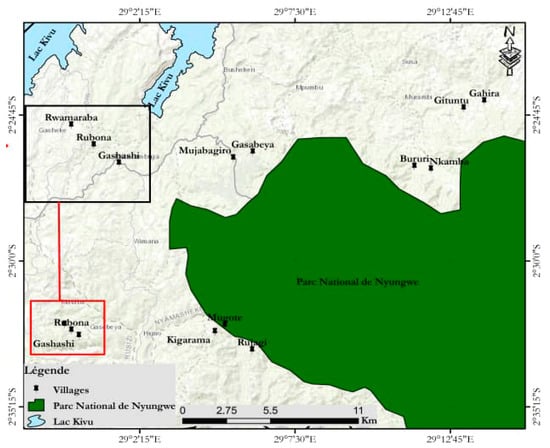
Figure 1

Figure 1
Open AccessArticle
Genetic Variation Associated with Leaf Phenology in Pedunculate Oak (Quercus robur L.) Implicates Pathogens, Herbivores, and Heat Stress as Selective Drivers
by
Jonatan Isaksson, Marcus Hall, Iryna Rula, Markus Franzén, Anders Forsman and Johanna Sunde
Forests 2025, 16(8), 1233; https://doi.org/10.3390/f16081233 (registering DOI) - 26 Jul 2025
Abstract
Leaf phenology of trees responds to temperature and photoperiod cues, mediated by underlying genes and plasticity. However, uncertainties remain regarding how smaller-scale phenological variation in cold-limited regions has been affected by modified selection pressures from herbivores, pathogens, and climate conditions, and whether this
[...] Read more.
Leaf phenology of trees responds to temperature and photoperiod cues, mediated by underlying genes and plasticity. However, uncertainties remain regarding how smaller-scale phenological variation in cold-limited regions has been affected by modified selection pressures from herbivores, pathogens, and climate conditions, and whether this leaves genetic signatures allowing for projections of future responses. We investigated environmental correlates and genetic variation putatively associated with spring and autumn leaf phenology in northern range margin oak (Quercus robur L.) populations in Sweden (55.6° N–60.8° N). Results suggested that budburst occurred later at higher latitudes and in locations with colder spring (April) temperatures, whereas leaf senescence occurred earlier at higher latitudes. Several candidate loci associated with phenology were identified (n = 40 for budburst and 47 for leaf senescence), and significant associations between these loci and latitude were detected. Functions associated with some of the candidate loci, as identified in previous studies, included host defence and heat stress tolerance. The proportion of polymorphic candidate loci associated with budburst decreased with increasing latitude, towards the range margin. Overall, the Swedish oak population seems to comprise genetic diversity in phenology-related traits that may provide resilience to a rapidly changing climate.
Full article
(This article belongs to the Special Issue Woody Plant Phenology in a Changing Climate, 2nd Edition)
►▼
Show Figures
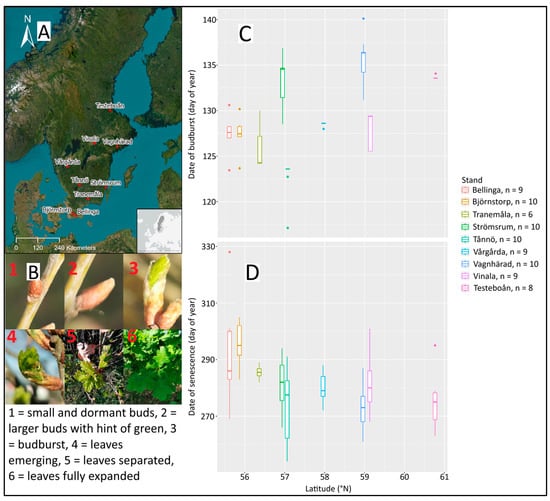
Figure 1

Figure 1
Open AccessArticle
Timber Industrial Policies and Export Competitiveness: Evidence from China’s Wood-Processing Sector in the Context of Sustainable Development
by
Yulan Sun, Fangzheng Wang, Weiming Lin, Yongwu Dai and Jiajun Lin
Forests 2025, 16(8), 1232; https://doi.org/10.3390/f16081232 (registering DOI) - 26 Jul 2025
Abstract
In the era of climate change, the strategic importance of forestry products for sustainable development is increasingly recognized. Amid a global resurgence of industrial policy aimed at addressing environmental challenges, this study investigates the impact of China’s central and provincial green industrial policies
[...] Read more.
In the era of climate change, the strategic importance of forestry products for sustainable development is increasingly recognized. Amid a global resurgence of industrial policy aimed at addressing environmental challenges, this study investigates the impact of China’s central and provincial green industrial policies on the export competitiveness of wood-processing enterprises. Utilizing firm-level data from the China Industrial Enterprise Database and China Customs Export Database (2000–2013), we apply a double machine learning (DML) approach and construct a heterogeneous competitiveness model to evaluate policy effects along two dimensions: export quantity (volume and intensity) and export quality (product complexity and consumer-perceived quality). Our findings reveal a clear dichotomy in policy outcomes. While industrial policies have significantly improved export product complexity—reflecting China’s comparative advantage in labor-intensive production—they have had limited or even negative effects on export volume, intensity, and product quality. This suggests that current policy frameworks disproportionately reward horizontal innovation (product diversification) while neglecting vertical upgrading (quality enhancement), thereby hindering comprehensive export performance gains. Those results highlight the need for more balanced and targeted policy design. By aligning industrial policy instruments with both complexity and quality objectives, policymakers can better support the sustainable transformation of China’s forestry sector and enhance its competitiveness in global value chains.
Full article
(This article belongs to the Section Forest Economics, Policy, and Social Science)
►▼
Show Figures
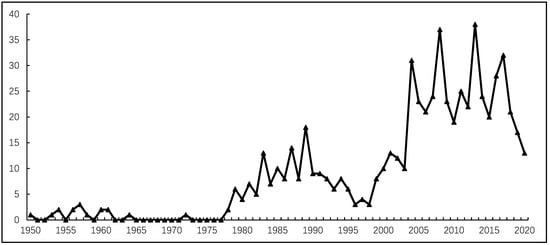
Figure 1

Figure 1
Open AccessArticle
The Impact of Supply and Demand Shocks on Chinese Wood Market
by
Yeheng Jiang, Haiying Su and Weicong Qian
Forests 2025, 16(8), 1231; https://doi.org/10.3390/f16081231 (registering DOI) - 26 Jul 2025
Abstract
China’s timber market is very complex and heterogeneous, and is experiencing the impact of the construction of national reserve forests and the downturn in the real estate sector. By setting up a partial equilibrium model which reflects the heterogeneity of China’s wood market,
[...] Read more.
China’s timber market is very complex and heterogeneous, and is experiencing the impact of the construction of national reserve forests and the downturn in the real estate sector. By setting up a partial equilibrium model which reflects the heterogeneity of China’s wood market, not only difference among domestic timber groups can be identified, but the dissimilarity of imported timber can also be differentiated from the aspects of species and sources. This model is capable of capturing the effects of macroeconomic conditions, forestry sector policies, and trade cost variations on China’s timber market structure. According to simulations of supply shocks, China’s large-diameter log capacity enhancement will have a noticeable crowding-out effect on imported timber, suggesting the diameter of logs is an important factor for market entities to make trade-offs between domestic and imported timber. Amidst both supply and demand shocks, the equilibrium quantity changes in China’s domestic small-diameter logs and imported timber are dominated by demand shocks, whereas the equilibrium quantity change in China’s domestic large-diameter logs is dominated by supply shocks; moreover, only domestic large-diameter logs realize quantity increase in double shocks; this improves China’s domestic timber supply structure, and is a good example of “opportunities in crisis” in the face of negative demand shocks.
Full article
(This article belongs to the Special Issue Trends and Challenges for Management in Wood-Based Sector in the Digital Age)
Open AccessArticle
Recovery Following a Drought-Induced Population Decline in an Exudivorous Forest Mammal
by
Ross L. Goldingay
Forests 2025, 16(8), 1230; https://doi.org/10.3390/f16081230 (registering DOI) - 26 Jul 2025
Abstract
The likely increase in the frequency and severity of droughts with climate warming will pose an enormous challenge for the conservation of forest biodiversity. Documenting the response of species to recent droughts can inform future conservation actions. Mammals that breed and mature slowly
[...] Read more.
The likely increase in the frequency and severity of droughts with climate warming will pose an enormous challenge for the conservation of forest biodiversity. Documenting the response of species to recent droughts can inform future conservation actions. Mammals that breed and mature slowly may be especially vulnerable to drought-induced disruption to breeding. The yellow-bellied glider (Petaurus australis, Shaw, 1791) is a threatened low-density, arboreal marsupial of eastern Australia. Following a severe drought in 2019, one population had declined by 48% by 2021. The present study investigated whether this population had recovered 3–4 years (2022 and 2023) after that drought. Audio surveys of this highly vocal species were conducted at 42 sites, sampling > 1000 h per year, and producing recordings of 2038–2856 call sequences. The probability of occupancy varied little across the two survey years (0.92–0.97). Local abundance in 2023 had returned to pre-drought levels (45% of occupied sites had ≥3 individuals compared to 6% in 2021). These findings show a recovery from a drought-induced decline required at least 3 years, in keeping with the slow life history traits of this species. This study highlights the importance of considering a species’ life history strategy when evaluating its sensitivity to drought.
Full article
(This article belongs to the Section Forest Biodiversity)
Open AccessArticle
Dendrometer-Based Analysis of Intra-Annual Growth and Water Status in Two Pine Species in a Mediterranean Forest Stand Under a Semi-Arid Climate
by
Mehmet S. Özçelik
Forests 2025, 16(8), 1229; https://doi.org/10.3390/f16081229 (registering DOI) - 26 Jul 2025
Abstract
Stem radius growth (GRO), tree water deficit (TWD), and maximum daily shrinkage (MDS) were monitored throughout 2023 in a semi-arid Mediterranean forest stand in Burdur, Türkiye, where Pinus nigra subsp. pallasiana (Lamb.) Holmboe and Pinus brutia Ten. naturally co-occur. These indicators, derived from
[...] Read more.
Stem radius growth (GRO), tree water deficit (TWD), and maximum daily shrinkage (MDS) were monitored throughout 2023 in a semi-arid Mediterranean forest stand in Burdur, Türkiye, where Pinus nigra subsp. pallasiana (Lamb.) Holmboe and Pinus brutia Ten. naturally co-occur. These indicators, derived from electronic band dendrometers, were analyzed in relation to key climatic variables. Results indicated that P. brutia had a longer growth period, while P. nigra exhibited a higher average daily increment under the environmental conditions of 2023 at the study site. Annual stem growth was nearly equal for both species. Based on dendrometer observations, P. brutia exhibited lower normalized TWD and higher normalized MDS values under varying vapor pressure deficit (VPD) and soil water potential (SWP) conditions. A linear mixed-effects model further confirmed that P. brutia consistently maintained lower TWD than P. nigra across a wide climatic range, suggesting a comparatively lower degree of drought-induced water stress. GRO was most influenced by air temperature and VPD, and negatively by SWP. TWD was strongly affected by both VPD and SWP, while MDS was primarily linked to minimum air temperature and VPD. Moreover, MDS in P. brutia appeared more sensitive to climate variability compared to P. nigra. Although drought limited stem growth in both species during the study year, the lower TWD and higher MDS observed in P. brutia may indicate distinct physiological strategies for coping with drought. These findings offer preliminary insights into interspecific differences in water regulation under the particular climatic conditions observed during the study year in this semi-arid Mediterranean ecosystem.
Full article
(This article belongs to the Section Forest Ecophysiology and Biology)
►▼
Show Figures
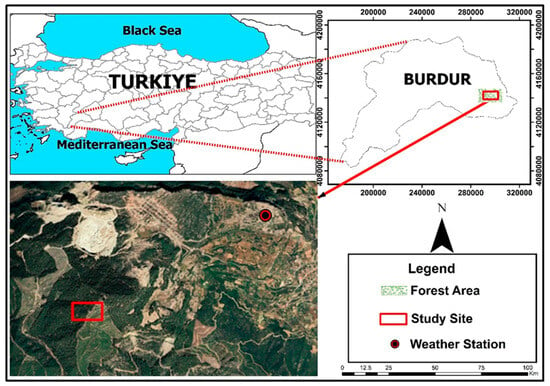
Figure 1

Figure 1
Open AccessArticle
Stem Volume Prediction of Chamaecyparis obtusa in South Korea Using Machine Learning and Field-Measured Tree Variables
by
Chiung Ko, Jintaek Kang and Donggeun Kim
Forests 2025, 16(8), 1228; https://doi.org/10.3390/f16081228 - 25 Jul 2025
Abstract
Accurate estimation of individual tree stem volume is essential for forest resource assessment and the implementation of sustainable forest management. In South Korea, traditional regression models based on non-destructive and easily measurable field variables such as diameter at breast height (DBH) and total
[...] Read more.
Accurate estimation of individual tree stem volume is essential for forest resource assessment and the implementation of sustainable forest management. In South Korea, traditional regression models based on non-destructive and easily measurable field variables such as diameter at breast height (DBH) and total height (TH) have been widely used to construct stem volume tables. However, these models often fail to adequately capture the nonlinear taper of tree stems. In this study, we evaluated and compared the predictive performance of traditional regression models and two machine learning algorithms—Random Forest (RF) and Extreme Gradient Boosting (XGBoost)—using stem profile data from 1000 destructively sampled Chamaecyparis obtusa trees collected across 318 sites nationwide. To ensure compatibility with existing national stem volume tables, all models used only DBH and TH as input variables. The results showed that all three models achieved high predictive accuracy (R2 > 0.997), with XGBoost yielding the lowest RMSE (0.0164 m3) and MAE (0.0126 m3). Although differences in performance among the models were marginal, the machine learning approaches demonstrated flexible and generalizable alternatives to conventional models, providing a practical foundation for large-scale forest inventory and the advancement of digital forest management systems.
Full article
(This article belongs to the Section Forest Inventory, Modeling and Remote Sensing)
►▼
Show Figures
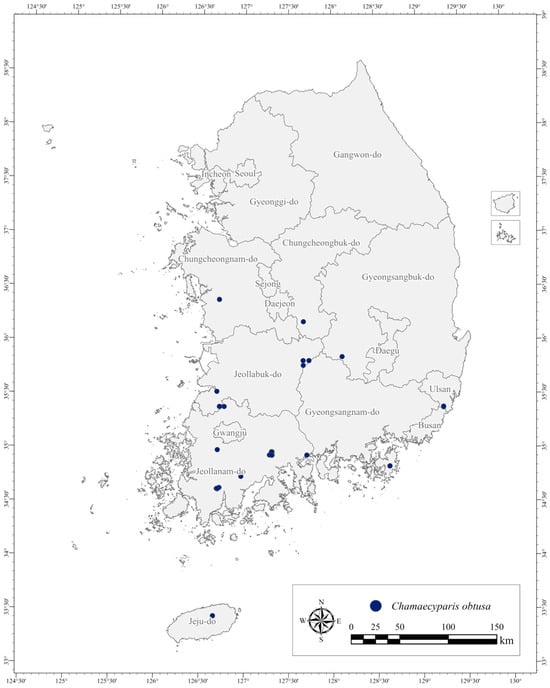
Figure 1

Figure 1
Open AccessArticle
Performance of Oriented Strand Boards Made with Jack Pine Strands Produced by an Innovative Strander-Canter
by
Rosilei Garcia, Alain Cloutier, Irsan Alipraja, Roger E. Hernández and Ahmed Koubaa
Forests 2025, 16(8), 1227; https://doi.org/10.3390/f16081227 - 25 Jul 2025
Abstract
Canadian sawmills commonly use chipper-canters to process softwood logs into squared lumber and wood chips for pulp mills. However, the declining demand for newsprint and print paper has led to an oversupply of wood chips, resulting in economic losses and environmental concerns. To
[...] Read more.
Canadian sawmills commonly use chipper-canters to process softwood logs into squared lumber and wood chips for pulp mills. However, the declining demand for newsprint and print paper has led to an oversupply of wood chips, resulting in economic losses and environmental concerns. To address this issue, a strander-canter capable of producing both softwood cants and strands for oriented strand board (OSB) presents a promising alternative. This study evaluates the feasibility of using jack pine strands generated by a novel strander-canter equipped with a cutterhead for OSB strand production. Strands were generated from frozen and unfrozen logs under varying cutting parameters and incorporated in the core layer of the panels. Industrial aspen strands were used for the surface layers. OSB panels were assessed for mechanical and physical properties following the CSA O325:21 standard. Strand size distribution and vertical density profiles were also analyzed. The results indicated that panels made from jack pine strands demonstrated bending and internal bond properties that were either comparable to or superior to those of the control panels. However, including jack pine strands in the core layer increased the thickness swelling of the panels.
Full article
(This article belongs to the Special Issue Properties and Uses of Value-Added Wood-Based Products and Composites)
Open AccessArticle
Climate-Driven Habitat Shifts and Conservation Implications for the Submediterranean Oak Quercus pyrenaica Willd.
by
Isabel Passos, Carlos Vila-Viçosa, João Gonçalves, Albano Figueiredo and Maria Margarida Ribeiro
Forests 2025, 16(8), 1226; https://doi.org/10.3390/f16081226 - 25 Jul 2025
Abstract
Climate change poses a major threat to forests, impacting the distribution and viability of key species. Quercus pyrenaica Willd., a marcescent oak endemic to the Iberian Peninsula (Portugal and Spain) and southwestern France and a structural species in submediterranean forests, is particularly susceptible
[...] Read more.
Climate change poses a major threat to forests, impacting the distribution and viability of key species. Quercus pyrenaica Willd., a marcescent oak endemic to the Iberian Peninsula (Portugal and Spain) and southwestern France and a structural species in submediterranean forests, is particularly susceptible to shifts in temperature and precipitation patterns. Aiming to assess its potential loss of suitable area under future climate scenarios, we developed high-resolution spatial distribution models to project the future habitat suitability of Q. pyrenaica under two climate change scenarios (SSP3-7.0 and SSP5-8.5) for the periods 2070 and 2100. Our model, which has an excellent predictive performance (AUC of 0.971 and a TSS of 0.834), indicates a predominantly northward shift in the potential distribution of the species, accompanied by substantial habitat loss in southern and lowland regions. Long-term potential suitable area may shrink to 42% of that currently available. This, combined with the limited natural dispersal capacity of the species, highlights the urgency of targeted management and conservation strategies. These results offer critical insights to inform conservation strategies and forest management under ongoing climate change.
Full article
(This article belongs to the Special Issue Climate and Land-Use Change Effects on the Biogeography of Woody Plant Species and Biodiversity Conservation)
►▼
Show Figures
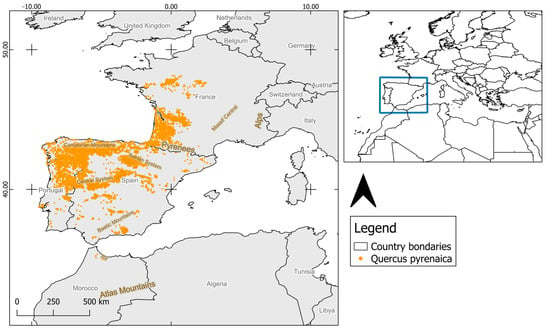
Figure 1

Figure 1
Open AccessArticle
Derivation and Application of Allometric Equations to Quantify the Net Primary Productivity (NPP) of the Salix pierotii Miq. Community as a Representative Riparian Vegetation Type
by
Bong Soon Lim, Jieun Seok, Seung Jin Joo, Jeong Cheol Lim and Chang Seok Lee
Forests 2025, 16(8), 1225; https://doi.org/10.3390/f16081225 - 25 Jul 2025
Abstract
International efforts are underway to implement carbon neutrality policies in rapidly changing climate conditions. This situation has strongly demanded the discovery of novel carbon sinks. The Salix genus has attracted attention as a promising carbon sink owing to its rapid growth and efficient
[...] Read more.
International efforts are underway to implement carbon neutrality policies in rapidly changing climate conditions. This situation has strongly demanded the discovery of novel carbon sinks. The Salix genus has attracted attention as a promising carbon sink owing to its rapid growth and efficient use as a biofuel in short-rotation cultivation. The present study aims to derive an allometric equation and conduct stem analysis as fundamental tools for estimating net primary productivity (NPP) in Salix pierotii Miq. stand, which is increasingly acknowledged as an important emerging carbon sink. The allometric equations derived showed a high explanatory rate and fitness (R2 ranged from 0.74 to 0.99). The allometric equations between DBH and stem volume and biomass derived in the process of stem analysis also showed a high explanatory rate and fitness (R2 ranged from 0.87 to 0.94). The NPPs calculated based on the allometric equation derived and stem analysis were 11.87 tonC∙ha−1∙yr−1 and 15.70 tonC∙ha−1∙yr−1, respectively. These results show that the S. pierotii community, recognized as the representative riparian vegetation, could play an important role as a carbon sink. In this context, an assessment of the carbon absorption capacity of riparian vegetation such as willow communities could contribute significantly to achieving carbon neutrality goals.
Full article
(This article belongs to the Section Forest Inventory, Modeling and Remote Sensing)
Open AccessArticle
Spatial Distribution of Mangrove Forest Carbon Stocks in Marismas Nacionales, Mexico: Contributions to Climate Change Adaptation and Mitigation
by
Carlos Troche-Souza, Edgar Villeda-Chávez, Berenice Vázquez-Balderas, Samuel Velázquez-Salazar, Víctor Hugo Vázquez-Morán, Oscar Gerardo Rosas-Aceves and Francisco Flores-de-Santiago
Forests 2025, 16(8), 1224; https://doi.org/10.3390/f16081224 - 25 Jul 2025
Abstract
Mangrove forests are widely recognized for their effectiveness as carbon sinks and serve as critical ecosystems for mitigating the effects of climate change. Current research lacks comprehensive, large-scale carbon storage datasets for wetland ecosystems, particularly across Mexico and other understudied regions worldwide. Therefore,
[...] Read more.
Mangrove forests are widely recognized for their effectiveness as carbon sinks and serve as critical ecosystems for mitigating the effects of climate change. Current research lacks comprehensive, large-scale carbon storage datasets for wetland ecosystems, particularly across Mexico and other understudied regions worldwide. Therefore, the objective of this study was to develop a high spatial resolution map of carbon stocks, encompassing both aboveground and belowground components, within the Marismas Nacionales system, which is the largest mangrove complex in northeastern Pacific Mexico. Our approach integrates primary field data collected during 2023–2024 and incorporates some historical plot measurements (2011–present) to enhance spatial coverage. These were combined with contemporary remote sensing data, including Sentinel-1, Sentinel-2, and LiDAR, analyzed using Random Forest algorithms. Our spatial models achieved strong predictive accuracy (R2 = 0.94–0.95), effectively resolving fine-scale variations driven by canopy structure, hydrologic regime, and spectral heterogeneity. The application of Local Indicators of Spatial Association (LISA) revealed the presence of carbon “hotspots,” which encompass 33% of the total area but contribute to 46% of the overall carbon stocks, amounting to 21.5 Tg C. Notably, elevated concentrations of carbon stocks are observed in the central regions, including the Agua Brava Lagoon and at the southern portion of the study area, where pristine mangrove stands thrive. Also, our analysis reveals that 74.6% of these carbon hotspots fall within existing protected areas, demonstrating relatively effective—though incomplete—conservation coverage across the Marismas Nacionales wetlands. We further identified important cold spots and ecotones that represent priority areas for rehabilitation and adaptive management. These findings establish a transferable framework for enhancing national carbon accounting while advancing nature-based solutions that support both climate mitigation and adaptation goals.
Full article
(This article belongs to the Special Issue Forest Inventory and Forest Carbon Assessments with Remote Sensing Technologies)
►▼
Show Figures
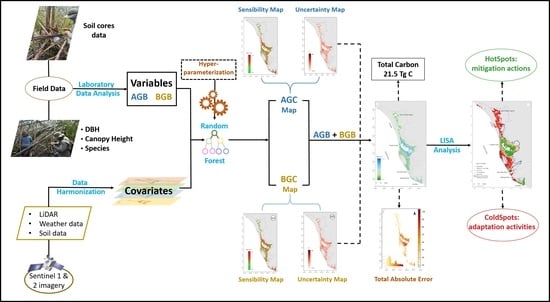
Graphical abstract

Graphical abstract
Open AccessArticle
Mechanical Property Prediction of Wood Using a Backpropagation Neural Network Optimized by Adaptive Fractional-Order Particle Swarm Algorithm
by
Jiahui Huang and Zhufang Kuang
Forests 2025, 16(8), 1223; https://doi.org/10.3390/f16081223 - 25 Jul 2025
Abstract
This study proposes a novel LK-BP-AFPSO model for the nondestructive evaluation of wood mechanical properties, combining a backpropagation neural network (BP) with adaptive fractional-order particle swarm optimization (AFPSO) and Liang–Kleeman (LK) information flow theory. The model accurately predicts four key mechanical properties—longitudinal tensile
[...] Read more.
This study proposes a novel LK-BP-AFPSO model for the nondestructive evaluation of wood mechanical properties, combining a backpropagation neural network (BP) with adaptive fractional-order particle swarm optimization (AFPSO) and Liang–Kleeman (LK) information flow theory. The model accurately predicts four key mechanical properties—longitudinal tensile strength (SPG), modulus of elasticity (MOE), bending strength (MOR), and longitudinal compressive strength (CSP)—using only nondestructive physical features. Tested across diverse wood types (fast-growing YKS, red-heart CSH/XXH, and iron-heart XXT), the framework demonstrates strong generalizability, achieving an average prediction accuracy (R2) of 0.986 and reducing mean absolute error (MAE) by 23.7% compared to conventional methods. A critical innovation is the integration of LK causal analysis, which quantifies feature–target relationships via information flow metrics, effectively eliminating 29.5% of spurious correlations inherent in traditional feature selection (e.g., PCA). Experimental results confirm the model’s robustness, particularly for heartwood variants, while its adaptive fractional-order optimization accelerates convergence by 2.1× relative to standard PSO. This work provides a reliable, interpretable tool for wood quality assessment, with direct implications for grading systems and processing optimization in the forestry industry.
Full article
(This article belongs to the Section Forest Operations and Engineering)
►▼
Show Figures

Figure 1

Figure 1
Open AccessArticle
Drivers of Forest Dieback and Growth Decline in Mountain Abies fabri Forests (Gongga Mountain, SW China)
by
Obey Kudakwashe Zveushe, Elena Granda, Jesús Julio Camarero, Faqin Dong, Ying Han and Víctor Resco de Dios
Forests 2025, 16(8), 1222; https://doi.org/10.3390/f16081222 - 24 Jul 2025
Abstract
Mountains are global biodiversity hotspots but face the danger of habitat loss, especially at lower elevations due to climate-warming-induced forest dieback. In the Gongga Mountains (SW China), Abies fabri trees at 2800 m show increased mortality, yet the causes remain unclear. We assessed
[...] Read more.
Mountains are global biodiversity hotspots but face the danger of habitat loss, especially at lower elevations due to climate-warming-induced forest dieback. In the Gongga Mountains (SW China), Abies fabri trees at 2800 m show increased mortality, yet the causes remain unclear. We assessed climatic influences and bark beetle infestations on tree vigor and radial growth, comparing healthy and declining trees at 2800, 3000, and 3600 m elevations. Leaf nitrogen and phosphorus concentrations were measured to evaluate nutrient status. From 1950 to 2019, mean annual temperatures rose at all elevations, while precipitation decreased at low elevations, negatively correlating with temperature. Such warmer, drier conditions impaired low-elevation trees. The decline in A. fabri growth began in the late 1990s to early 2000s, with an earlier and more pronounced onset at lower elevations. A clear lag is evident, as trees at 3000 m and 3600 m showed either delayed or minimal decline during the same period. High-elevation trees experienced more stable climate and better nutrient availability, supporting greater growth and leaf nitrogen in healthy trees. Bark beetle infestations were worst in declining trees at the highest elevation. Our results reveal that A. fabri vigor shifts along elevation gradients reflect interactions between abiotic and biotic stressors, especially aridification.
Full article
(This article belongs to the Special Issue Ecological Responses of Forests to Climate Change)
►▼
Show Figures
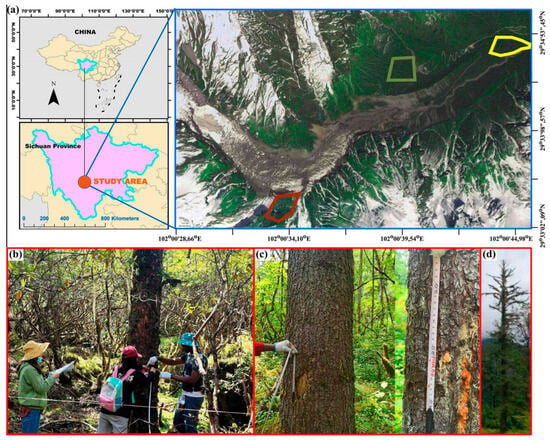
Figure 1

Figure 1
Open AccessArticle
Determining the Structural Characteristics of Farmland Shelterbelts in a Desert Oasis Using LiDAR
by
Xiaoxiao Jia, Huijie Xiao, Zhiming Xin, Junran Li and Guangpeng Fan
Forests 2025, 16(8), 1221; https://doi.org/10.3390/f16081221 - 24 Jul 2025
Abstract
The structural analysis of shelterbelts forms the foundation of their planning and management, yet the scientific and effective quantification of shelterbelt structures requires further investigation. This study developed an innovative heterogeneous analytical framework, integrating three key methodologies: the LeWoS algorithm for wood–leaf separation,
[...] Read more.
The structural analysis of shelterbelts forms the foundation of their planning and management, yet the scientific and effective quantification of shelterbelt structures requires further investigation. This study developed an innovative heterogeneous analytical framework, integrating three key methodologies: the LeWoS algorithm for wood–leaf separation, TreeQSM for structural reconstruction, and 3D alpha-shape spatial quantification, using terrestrial laser scanning (TLS) technology. This framework was applied to three typical farmland shelterbelts in the Ulan Buh Desert oasis, enabling the first precise quantitative characterization of structural components during the leaf-on stage. The results showed the following to be true: (1) The combined three-algorithm method achieved ≥90.774% relative accuracy in extracting structural parameters for all measured traits except leaf surface area. (2) Branch length, diameter, surface area, and volume decreased progressively from first- to fourth-order branches, while branch angles increased with ascending branch order. (3) The trunk, branch, and leaf components exhibited distinct vertical stratification. Trunk volume and surface area decreased linearly with height, while branch and leaf volumes and surface areas followed an inverted U-shaped distribution. (4) Horizontally, both surface area density (Scd) and volume density (Vcd) in each cube unit exhibited pronounced edge effects. Specifically, the Scd and Vcd were greatest between 0.33 and 0.60 times the shelterbelt’s height (H, i.e., mid-canopy). In contrast, the optical porosity (Op) was at a minimum of 0.43 H to 0.67 H, while the volumetric porosity (Vp) was at a minimum at 0.25 H to 0.50 H. (5) The proposed volumetric stratified porosity (Vsp) metric provides a scientific basis for regional farmland shelterbelt management strategies. This three-dimensional structural analytical framework enables precision silviculture, with particular relevance to strengthening ecological barrier efficacy in arid regions.
Full article
(This article belongs to the Section Forest Inventory, Modeling and Remote Sensing)
►▼
Show Figures

Figure 1

Figure 1
Open AccessArticle
Use of Volatile Organic Compounds Produced by Bacillus Bacteria for the Biological Control of Fusarium oxysporum
by
Marcin Stocki, Natalia Stocka, Piotr Borowik, Marzenna Dudzińska, Amelia Staszowska, Adam Okorski and Tomasz Oszako
Forests 2025, 16(8), 1220; https://doi.org/10.3390/f16081220 - 24 Jul 2025
Abstract
Restricting the use of chemical pesticides in forestry requires the search for alternative solutions. These could be volatile organic compounds produced by three investigated species of bacteria (Bacillus amyloliquefaciens (ex Fukumoto) Priest, B. subtilis (Ehrenberg) Cohn and B. thuringiensis Berliner), which inhibit
[...] Read more.
Restricting the use of chemical pesticides in forestry requires the search for alternative solutions. These could be volatile organic compounds produced by three investigated species of bacteria (Bacillus amyloliquefaciens (ex Fukumoto) Priest, B. subtilis (Ehrenberg) Cohn and B. thuringiensis Berliner), which inhibit the growth of the pathogen F. oxysporum Schltdl. emend. Snyder & Hansen in forest nurseries. The highest inhibition of fungal growth (70%) was observed with B. amyloliquefaciens after 24 h of antagonism test, which had a higher content of carbonyl compounds (46.83 ± 8.41%) than B. subtilis (41.50 ± 6.45%) or B. thuringiensis (34.62 ± 4.77%). Only in the volatile emissions of B. amyloliquefaciens were 3-hydroxybutan-2-one, undecan-2-one, dodecan-5-one and tetradecan-5-one found. In contrast, the main components of the volatile emissions of F. oxysporum were chlorinated derivatives of benzaldehyde (e.g., 3,5-dichloro-4-methoxybenzaldehyde) and chlorinated derivatives of benzene (e.g., 1,4-dichloro-2,5-dimethoxybenzene), as well as carbonyl compounds (e.g., benzaldehyde) and alcohols (e.g., benzyl alcohol). Further compounds were found in the interactions between B. amyloliquefaciens and F. oxysporum (e.g.,
(This article belongs to the Special Issue Advances in Forest Tree Seedling Cultivation Technology—2nd Edition)
►▼
Show Figures

Figure 1

Figure 1
Open AccessArticle
TEB-YOLO: A Lightweight YOLOv5-Based Model for Bamboo Strip Defect Detection
by
Xipeng Yang, Chengzhi Ruan, Fei Yu, Ruxiao Yang, Bo Guo, Jun Yang, Feng Gao and Lei He
Forests 2025, 16(8), 1219; https://doi.org/10.3390/f16081219 - 24 Jul 2025
Abstract
The accurate detection of surface defects in bamboo is critical to maintaining product quality. Traditional inspection methods rely heavily on manual labor, making the manufacturing process labor-intensive and error-prone. To overcome these limitations, TEB-YOLO is introduced in this paper, a lightweight and efficient
[...] Read more.
The accurate detection of surface defects in bamboo is critical to maintaining product quality. Traditional inspection methods rely heavily on manual labor, making the manufacturing process labor-intensive and error-prone. To overcome these limitations, TEB-YOLO is introduced in this paper, a lightweight and efficient defect detection model based on YOLOv5s. Firstly, EfficientViT replaces the original YOLOv5s backbone, reducing the computational cost while improving feature extraction. Secondly, BiFPN is adopted in place of PANet to enhance multi-scale feature fusion and preserve detailed information. Thirdly, an Efficient Local Attention (ELA) mechanism is embedded in the backbone to strengthen local feature representation. Lastly, the original CIoU loss is replaced with EIoU loss to enhance localization precision. The proposed model achieves a precision of 91.7% with only 10.5 million parameters, marking a 5.4% accuracy improvement and a 22.9% reduction in parameters compared to YOLOv5s. Compared with other mainstream models including YOLOv5n, YOLOv7, YOLOv8n, YOLOv9t, and YOLOv9s, TEB-YOLO achieves precision improvements of 11.8%, 1.66%, 2.0%, 2.8%, and 1.1%, respectively. The experiment results show that TEB-YOLO significantly improves detection precision and model lightweighting, offering a practical and effective solution for real-time bamboo surface defect detection.
Full article
(This article belongs to the Special Issue Cutting-Edge Solutions in Advanced Forestry: Integrating Sensors, AI, IoT, Robotics, and Connectivity)
►▼
Show Figures

Figure 1

Figure 1
Open AccessArticle
Fire-Induced Floristic and Structural Degradation Across a Vegetation Gradient in the Southern Amazon
by
Loriene Gomes da Rocha, Ben Hur Marimon Junior, Amauri de Castro Barradas, Marco Antônio Camillo de Carvalho, Célia Regina Araújo Soares, Beatriz Schwantes Marimon, Gabriel H. P. de Mello Ribeiro, Edmar A. de Oliveira, Fernando Elias, Carmino Emidio Júnior, Dennis Rodrigues da Silva, Marcos Leandro Garcia, Jesulino Alves da Rocha Filho, Marcelo Zortea, Edmar Santos Moreira, Samiele Camargo de Oliveira Domingues, Eraldo A. T. Matricardi, David Galbraith, Ted R. Feldpausch, Imma Oliveras and Oliver L. Phillipsadd
Show full author list
remove
Hide full author list
Forests 2025, 16(8), 1218; https://doi.org/10.3390/f16081218 - 24 Jul 2025
Abstract
Climate change and landscape fragmentation have made fires the primary drivers of forest degradation in Southern Amazonia. Understanding their impacts is crucial for informing public conservation policies. In this study, we assessed the effects of repeated fires on trees with a diameter ≥10
[...] Read more.
Climate change and landscape fragmentation have made fires the primary drivers of forest degradation in Southern Amazonia. Understanding their impacts is crucial for informing public conservation policies. In this study, we assessed the effects of repeated fires on trees with a diameter ≥10 cm across three distinct vegetation types in this threatened region: Amazonian successional forest (SF), transitional forest (TF), and ombrophilous forest (OF). Two anthropogenic fires affected all three vegetation types in consecutive years. We hypothesized that SF would be the least impacted due to its more open structure and the presence of fire-adapted savanna (Cerrado) species. As expected, SF experienced the lowest tree mortality rate (9.1%). However, both TF and OF were heavily affected, with mortality rates of 28.0% and 29.7%, respectively. Despite SF’s apparent fire resilience, all vegetation types experienced a significant net loss of species and individuals. These results indicate a fire-induced degradation stage in both TF and OF, characterized by reduced species diversity and structural integrity. Our findings suggest that recurrent fires may trigger irreversible vegetation shifts and broader ecosystem tipping points across the Amazonian frontier.
Full article
(This article belongs to the Special Issue Tropical Forests, Water Cycle, Global Cycles of Greenhouse Gases and Climate Change)
►▼
Show Figures

Figure 1

Figure 1

Journal Menu
► ▼ Journal Menu-
- Forests Home
- Aims & Scope
- Editorial Board
- Reviewer Board
- Topical Advisory Panel
- Instructions for Authors
- Special Issues
- Topics
- Sections & Collections
- Article Processing Charge
- Indexing & Archiving
- Editor’s Choice Articles
- Most Cited & Viewed
- Journal Statistics
- Journal History
- Journal Awards
- Conferences
- Editorial Office
Journal Browser
► ▼ Journal BrowserHighly Accessed Articles
Latest Books
E-Mail Alert
News
Topics
Topic in
Agriculture, Agronomy, Forests, Plants, Stresses
The Effect of Climate Change on Crops and Natural Ecosystems, 2nd Volume
Topic Editors: Arnd Jürgen Kuhn, Giuseppe FenuDeadline: 31 July 2025
Topic in
Climate, Diversity, Forests, Plants, Sustainability, Earth
Responses of Trees and Forests to Climate Change
Topic Editors: Qinglai Dang, Ilona Mészáros, Lei WangDeadline: 30 August 2025
Topic in
Diversity, Forests, Genes, IJPB, Plants
Plant Chloroplast Genome and Evolution
Topic Editors: Chao Shi, Lassaâd Belbahri, Shuo WangDeadline: 31 August 2025
Topic in
Agriculture, Agronomy, Forests, Remote Sensing, Sustainability
Challenges, Development and Frontiers of Smart Agriculture and Forestry—2nd Volume
Topic Editors: Xiaoli Zhang, Dengsheng Lu, Xiujuan Chai, Guijun Yang, Langning HuoDeadline: 30 September 2025

Conferences
Special Issues
Special Issue in
Forests
Abiotic and Biotic Stress Responses in Trees Species
Guest Editors: Hou-Ling Wang, Liu-Qiang WangDeadline: 29 July 2025
Special Issue in
Forests
EcoResource: Sustainable Materials and Waste Management in Wood and Non-wood Resources
Guest Editors: Irena Bates, Nikola Španić, Ivana Plazonić, Mia KurekDeadline: 30 July 2025
Special Issue in
Forests
Transforming Wood into Smart Materials: Innovations in Processing and Application
Guest Editors: Hao Guan, Qiuqin Lin, Shanshan Jia, Monika Sarvašová KvietkováDeadline: 30 July 2025
Special Issue in
Forests
The Relationship Between Forest Vegetation and Water and Its Regulation in Changing Environments
Guest Editors: Yanhui Wang, Zebin LiuDeadline: 30 July 2025
Topical Collections
Topical Collection in
Forests
Forests Carbon Fluxes and Sequestration
Collection Editor: Mark Harmon
Topical Collection in
Forests
Forest Sustainable Management in Europe
Collection Editor: Ignacio Diaz-Maroto
Topical Collection in
Forests
Historical Wood: Structure, Properties and Conservation
Collection Editor: Magdalena Broda
Topical Collection in
Forests
Reviews and Meta-Analyses in Forest Meteorology and Climate Change
Collection Editors: Giacomo Alessandro Gerosa, Riccardo Marzuoli





